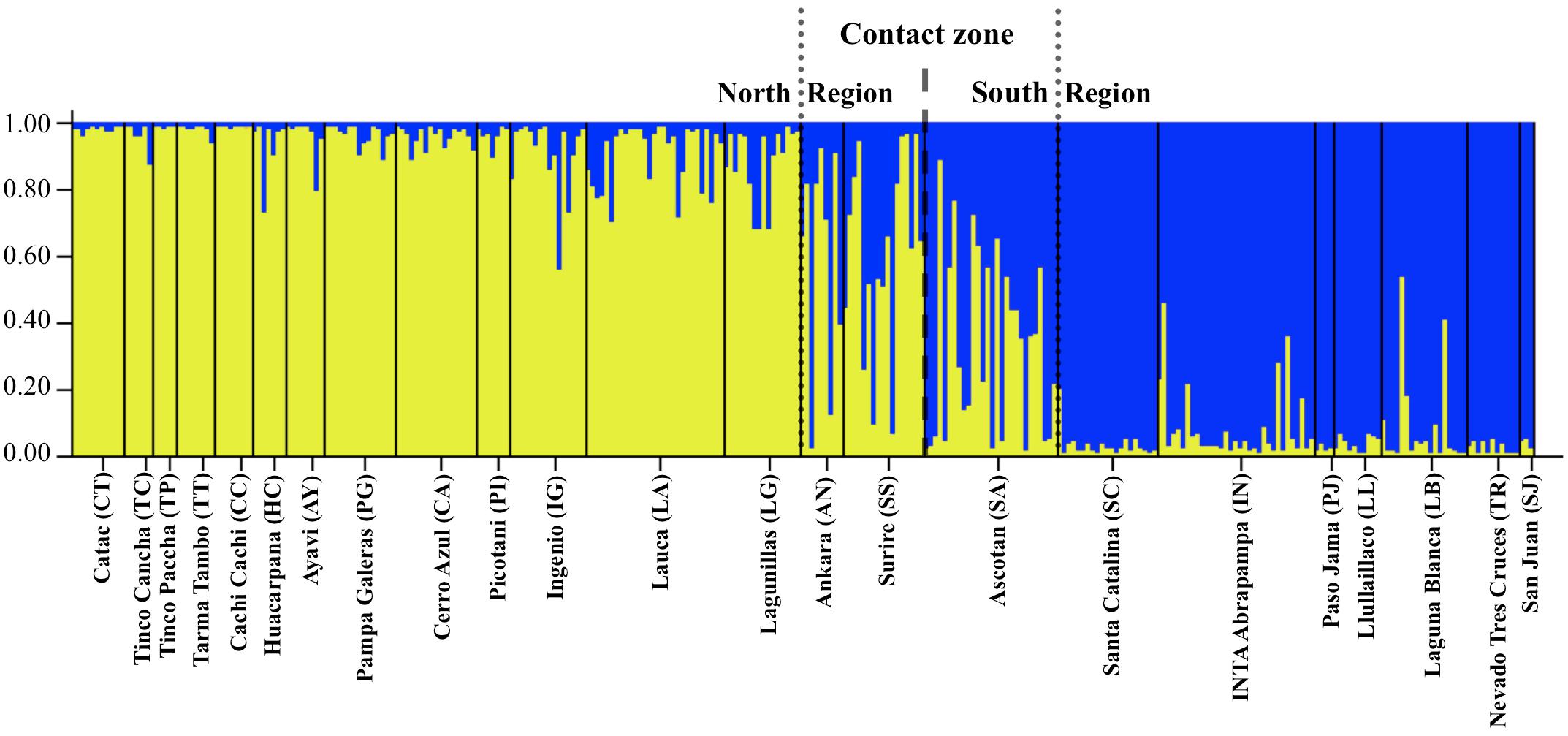
Groups of populations are maximally differentiated from each other, without constraint for the geographic composition of the groups The cartoon below illustrates one case encountered frequently with SAMOVA 2.0: the allocation of one population from one group to another leads to the fragmentation of one group in 2 distinct sets of adjacent populations. The cartoon below illustrates the behaviour of SAMOVA 2.0. The configuration with the largest associated FCT value after the 100 independent simulated annealing processes is retained as the best grouping of populations. To make sure that the final configuration of the K groups is not affected by a given initial configuration, the simulated annealing process is repeated 100 times, starting each time from a different initial partition of the n samples into the K groups. You'll find below different combinations of values of S and A and the corresponding probability values to accept the new structure FCT*-FCT In SAMOVA 2.0, S and A can be chosen by the user. In this case, the probability p defined above is equal to 1% if the difference between FCT and FCT* at the 10 000th iteration is equal to 0.001. In SAMOVA 1.0, the number of steps S in the simulated annealing process was set to 10 000 and the constant A to 0.9158. Where S is the number of steps performed in the simulated annealing process, and A is an arbitrary constant controlling the speed of the cooling process. The new structure is accepted with probability.The new FCT value (noted FCT*) associated with the new partition is computed.

Samova genodive mac#
There is no Linux or Mac version yet.ĭescription of the algorithm Groups of populations are geographically homogeneous and maximally differentiated from each other The method is described in Dupanloup, Schneider and Excoffier (2002).Ī new functionality of SAMOVA 2.0 is to define groups of populations that are maximally differentiated from each other, without constraint for the geographic composition of the groups. The method is based on a simulated annealing procedure that aims at maximizing the proportion of total genetic variance due to differences between groups of populations (SAMOVA, Spatial Analysis of MOlecular VAriance).


As a by-product, it also leads to the identification of genetic barriers between these groups. SAMOVA 2.0 implements an approach to define groups of populations that are geographically homogeneous and maximally differentiated from each other.


 0 kommentar(er)
0 kommentar(er)
